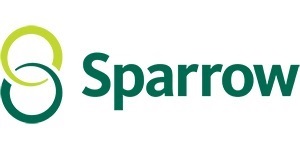
MHSAA Teams with Sparrow Health
February 16, 2015
By Geoff Kimmerly
Second Half editor
Providing information and best practices to players, parents, coaches and administrators on how best to minimize health risks is a key component of keeping student-athletes safe. The Michigan High School Athletic Association has teamed with Sparrow Health System of Lansing to better inform its member schools on such health and safety matters.

Sparrow, a member of the prestigious Mayo Clinic Care Network, is mid-Michigan’s premier healthcare organization with more than 10,000 caregivers. Sparrow’s Sports Medicine division offers programs for athletes at all levels and includes primary care physicians, orthopedic surgeons, physical therapists and athletic and performance trainers.
Sparrow will lend its expertise through the MHSAA Website and on-site at various MHSAA tournament events. Resources from Sparrow staff, including information on current health and safety topics and trends, will be accessible online through the Health & Safety page of the MHSAA Website.
Sparrow’s contributions also will be promoted through the MHSAA’s multiple social media platforms. “This partnership is one of the biggest steps we’ve ever taken to build the MHSAA’s capacity to address the almost daily questions we receive about student-athlete health and wellness, and to sort out and solve the biggest issues of school sports safety,” said John E. “Jack” Roberts, executive director of the MHSAA.
A key component to Sparrow’s addition to the MHSAA Website is an “Ask the Experts” feature that connects users directly to Sparrow’s Sports Medicine staff. Sparrow also will set up booths at various MHSAA tournaments where staff will be available to answer similar questions and discuss sports medicine-related issues.
“Sparrow is thrilled to partner with the MHSAA,” said Stella Cash, Sparrow vice president for development and strategic partnerships. “We have the region’s pre-eminent primary care physicians trained in sports medicine who specialize in the prevention and treatment of sports-related injuries.
Parents and coaches can turn to us for all health-related issues and trust we are focused on transforming care to keep their high school athletes fit, healthy and in the game.”
Sparrow Health System includes hospitals in Lansing, St. Johns, Ionia and Carson City as well as Physicians Health Plan, Sparrow Physicians Health Network, the Sparrow Medical Group and the Michigan Athletic Club. Sparrow also is affiliated with Michigan State University’s three human health colleges.
The MHSAA is a private, not-for-profit corporation of voluntary membership by more than 1,400 public and private senior high schools and junior high/middle schools which exists to develop common rules for athletic eligibility and competition. No government funds or tax dollars support the MHSAA, which was the first such association nationally to not accept membership dues or tournament entry fees from schools. Member schools which enforce these rules are permitted to participate in MHSAA tournaments, which attract more than 1.4 million spectators each year.

MHSAA Ups Awareness with 'Heat Ways'
August 6, 2013
With the beginning of a new year for high school sports just a week away, members of the Michigan High School Athletic Association have been preparing to follow a new model policy for hot weather activity, guided by a new publication and a rules meeting emphasis on heat and hydration.
The MHSAA Representative Council adopted a Model Policy for Managing Heat & Humidity earlier this year, a plan many schools have since adopted at the local level. The plan directs schools to begin monitoring the heat index at the activity site once the air temperature reaches 80 degrees, and provides recommendations when the heat index reaches certain points, including ceasing activities when it rises above 104 degrees.
The model policy is outlined in a number of places, including a new publication called Heat Ways, which is available for download from the MHSAA Website. Heat Ways not only provides the model policy, but addresses the need for proper acclimatization in hot weather.
The topic of heat-related injuries receives a lot of attention at this time of year, especially when deaths at the professional, collegiate and interscholastic levels of sport occur, and especially since they are preventable in most cases with the proper precautions. In football, data from the National Federation of State High School Associations shows that 41 high school players have died from heat stroke between 1995 and 2012.
Even before the days of the Internet, the MHSAA held a leadership role in providing resources each Spring to assist schools in their preparation for hot preseason practices. In addition to the information now contained in Heat Ways, the Association is making dealing with heat, hydration and acclimatization the topic for its required preseason rules meetings for coaches and officials. The 15-minute online presentation spends a fair amount of time talking about the need for good hydration in sports, regardless of the activity or time of year.
The Health & Safety Resources page of the MHSAA Website has a set a number of links to different publications and information, and a free online presentation from the National Federation of State High School Associations. Visit MHSAA.com, click on Schools, and then on Health & Safety Resources to find the information.
“We know now more than we ever have about when the risk is high and who is most at risk, and we’re fortunate to be able to communicate that information better than ever before to administrators, coaches, athletes and parents," said John E. “Jack” Roberts, executive director of the MHSAA. “Heat stroke is almost always preventable, and we encourage everyone to avail themselves of the information on our website.”
Roberts added that the first days of formal practices in hot weather should be more for heat acclimatization than the conditioning of athletes, and that practices in such conditions need planning to become longer and more strenuous over a gradual progression of time.
“Then, schools need to be vigilant about providing water during practices, making sure that youngsters are partaking of water and educating their teams about the need for good hydration practices away from the practice and competition fields,” Roberts said.

